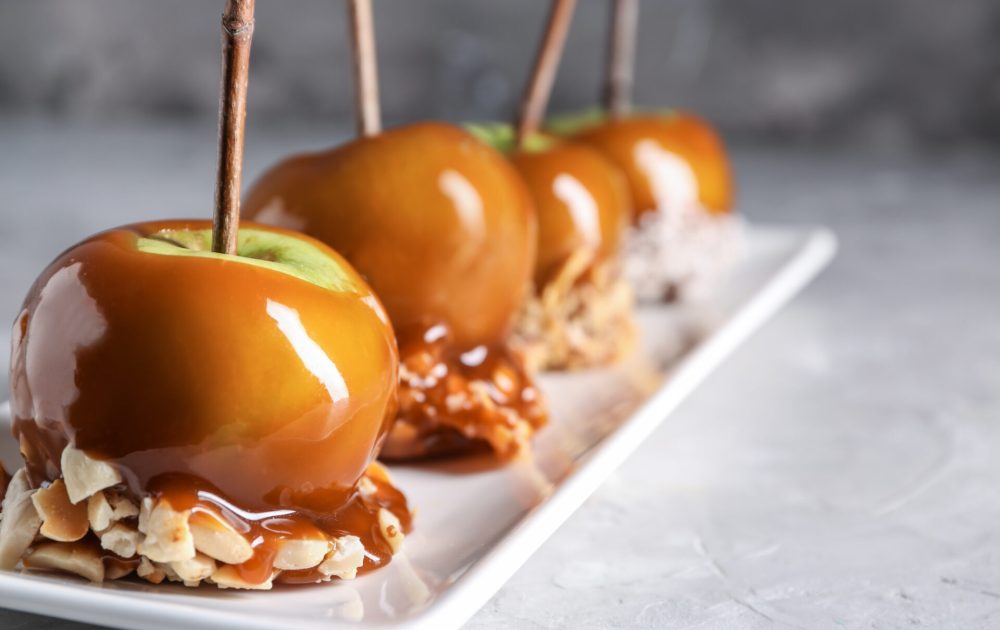Our test tells you which everyday chemicals you've recently come into contact with, and easy steps you can follow to reduce your exposure to them.
Healthier Bonfire Night ideas

What are your childhood memories of Bonfire Night – a raging fire, standing too close, fireworks shooting off, and lots of woody smoke?
Decades ago, we didn’t think much about what might be in the smokey air we were inhaling; the focus was about the fire and burn risks. But in a world with more awareness of the hazards that environmental pollutants pose to our health, we’ve come up with some alternative ways to celebrate this traditional night without exposing ourselves to some of the risks.
Bonfire Night food ideas
Toffee apples, hot soup, and comforting foods are the hallmarks of Bonfire Night food, so this year, try making your own healthier treats at home and get the whole family involved. There are so many recipes to choose from; here are some examples of Bonfire Night recipes. You can make the recipes even healthier using sugar alternatives to sweeten and organic ingredients, but home-made food will usually be a healthier alternative to processed alternatives. Shops offer the convenience of sugary treats and Bonfire Night party foods, but many are made using ultra processed ingredients, for example most traditional bonfire apples are non-organic and wrapped in plastic.
Give your immune system a boost
Why not make some homemade immune boosting drinks to sip around the fire that help keep flu symptoms at bay at the same time. Lemons and ginger are great ingredients to give your immune system a natural boost, and they can be made into ‘Ginger shots’ by hot water and honey to keep you warm, the recipe is below. For more warm cosy drink recipes to keep toasty visit the BBC Food Blog.
Enjoying Bonfire Night
If you’re having a gathering at home, here are some ideas to keep you warm.
- If you plan to cook outside, toast some food on the fire and cook on cast iron to reduce exposure to PFAS.
- Buy organic apples for ‘apple bobbing’ or make your own organic toffee apples.
- Make some organic popcorn.
- Light an outdoor fire responsibly using a fire pit (or other controlled manner) and use dry natural wood sources to reduce exposure to pollutants via inhalation.
- Keep warm during your gathering by wearing natural fibred clothes to reduce exposure to plastics or dyes – try wool, bamboo, or cotton and try to get organic options.
- Look for alternative ‘firework’ displays that use LED light installations, drone displays, or laser lightshows.
- The best way to reduce your exposure to particulate matter released on Bonfire Night is to stay indoors and keep windows and doors closed.
The chemical risk from fireworks
The primary ingredient in fireworks is gun powder, which is made from charcoal (the fuel), sulphur, and potassium nitrate (to make it burn). When fireworks explode small particles are released into the air as well as toxic metals, such as ozone, carbon dioxide, nitric oxide, and sulphur dioxide. When fired over water, fireworks can also leave deposits in water.
Research into the health effects of exposure to firework particles has lagged when compared to the growth in their use. But the effects of particulate matter firework emissions on respiratory health is becoming established. Animal studies have demonstrated that samples of ambient air collected when fireworks are ignited can produce adverse effects in mammalian cells and lungs.
Ginger shot recipe
- 4 organic lemons
- 2 good chunks of ginger (more if you like!)
- ½ cup of cider vinegar
- 2 cups of filtered water
Juice the lemons and roughly chop the up the ginger. Blend the juice and ginger together in an electric blender. Push the liquid through a sieve and press it down with a spoon to squeeze all the juice out into a glass bowl or jug. Add the cider vinegar and water and mix. Store in a clean glass bottle; it will keep in the fridge for a few days. To make a warm drink pour about a dessert spoonful of the liquid into a mug, top up with hot water, add organic honey to taste, and maybe a splash of the tipple of your choice!
More reading
The impact of fireworks on air pollution
To find an organised firework display near where you live visit your local Fire Service website.